Hidden gem national park is ‘better than the Grand Canyon’ – and packed with actual gems
Every year, millions of tourists flock to Arizona’s most famous national park: the Grand Canyon.
Still, travel experts claim there’s a lesser-known, but no less beautiful, park in the Copper State that could be even better.
Arizona’s PThe etrified Forest National Park offers breathtaking views and plants and fossils dating back to the ‘Dawn of the Dinosaurs’.
But most wondrous of all is the petrified wood – hence the park’s name – which looks like sparkling gemstones in the desert sun.
Travel journalist Monica Humphries told it Business insider the park is her favorite of the 14 she visited in the US in 2023.
‘The park isn’t home to towering mountains or striking canyons like many of the more popular national parks, but it does have a natural phenomenon that I had never seen before. The petrified wood amazed me,” she said.
‘Among the impressive plateaus, colorful fossils and history, I left the hotel feeling excited about my decision to stop. And I left with a new favorite park’.
Arizona’s Petrified Forest National Park is one of the few places in America where petrified wood can be found
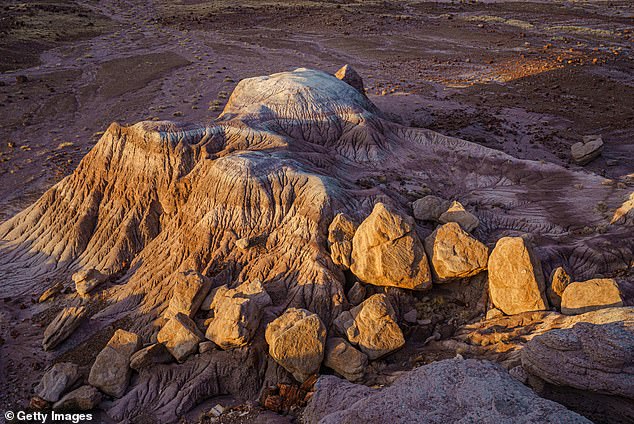
Visitors can drive through the 218,000-acre park in less than an hour, from both the north and south, with views of the Petrified Forest, Badlands, and Painted Desert
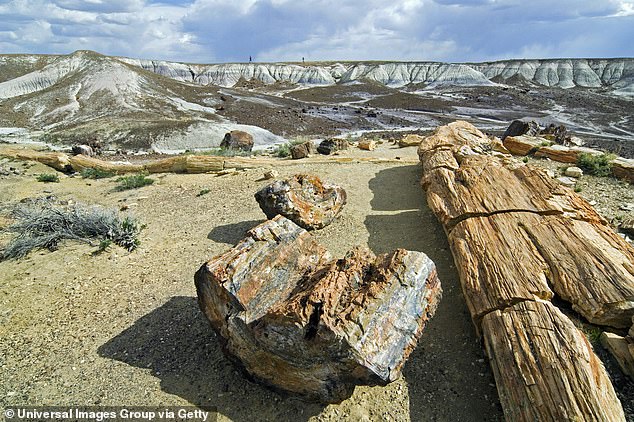
Petrified Forest National Park was established in 1906 by President Theodore Roosevelt and 56 years later in 1962 it was designated a national park
The national park is located in the northeastern part of the state, in Navajo and Apache counties, about 50 miles from the New Mexico border on Interstate 40.
It was established as a national monument by President Theodore Roosevelt in 1906 and 56 years later, in 1962, it was designated a national park.
Visitors can drive through the 218,000-acre park from the north or south in less than an hour, where they will be greeted by stunning views of the Painted Desert. It is the only national park site that contains part of Route 66.
But it is best known for its brightly colored petrified wood consisting of almost solid quartz.
The colors are produced by the impurities in the quartz, such as iron and carbon. Each piece is like a giant crystal, sparkling in the sunlight as if covered in glitter. the park’s website explains.
The tree trunks were preserved after being washed into a river system more than 200 million years ago and buried under a large amount of sediment and debris, cutting off their oxygen and slowing the rotting process.
The result is so stunning that photos regularly go viral.
One photo shows a cross-section of petrified wood aappeared in at least 17 Reddit discussion groups, with thousands of comments and votes.
According to reports, it was shared by hundreds of people on X (formerly Twitter), Facebook and Pinterest AZ central.
The park has a long history of gem collectors blowing the logs in search of amethyst or quartz. But that came to an end when the area was designated a national monument and then a national park.
Some visitors have been known to still try to sweep away a piece of wood.
However, the park’s ‘Conscience Pile’ acts as a monument to everyone who has since returned the precious logs with letters of apology after discovering that the rocks were ‘cursed’ and brought nothing but bad luck.

In the photo: the Grand Canyon, a three-hour drive from the Petrified Forest National Park
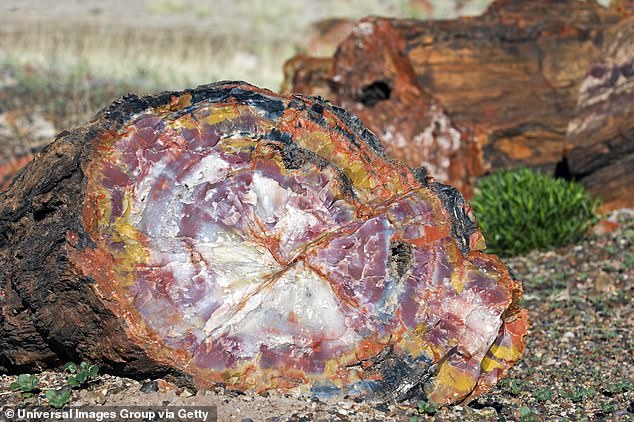
Petrified wood consists of almost solid quartz, with each piece sparkling like a giant crystal
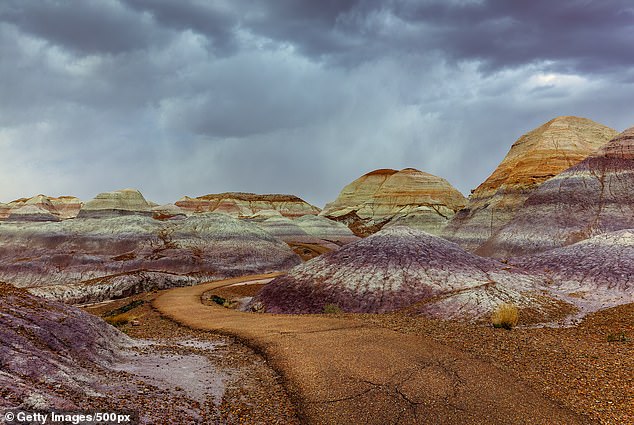
The Rainbow Forest Museum, near the park’s southern entrance, shows an introductory film about the park, displays skeletons of prehistoric animals, and provides access to hiking trails
About half a million people visited Petrified Forest National Park in 2022, compared to about 4.7 million people who went to the Grand Canyon. And it ranked 39th out of 63rd for visitors, Business Insider reported.
However, there have been no deaths in Petrified National Park since 2010, while the Grand Canyon averages twelve deaths per year, with approximately 2,007 deaths since 2007.
The Petrified Forest National Park also attracts paleontologists from around the world, who have discovered fossils dating back more than 200 million years – the era dubbed ‘The Dawn of the Dinosaurs’.
A recent dig has yielded microfossils containing the jawbones and teeth of early reptiles, as well as fossils of phytosaurs, which according to AZ Central were the early ancestors of the crocodile.
Information about these fossils and the petrified wood can be found at the Rainbow Forest Museum, near the southern entrance to the park.
Here you can watch an introductory film about the park, view skeletons of prehistoric animals and view walking routes through the park, according to USA today.
You can also gain insight into the history of the area at the Puerco Pueblo, an archaeological site that was previously a village with no fewer than 200 inhabitants about 600 years ago.
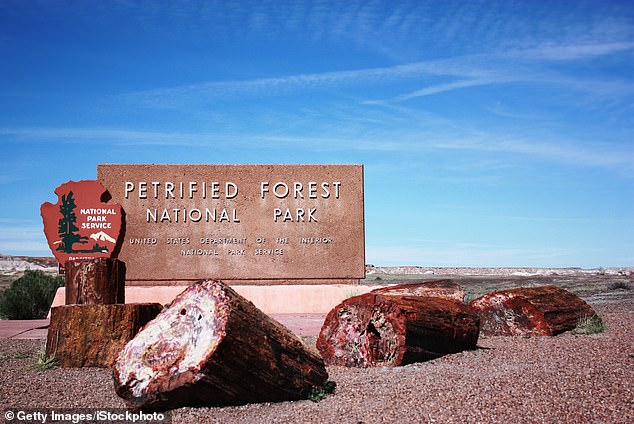
The park attracts more than 600,000 visitors annually, many of whom attempt to sweep away parts of the quartz for themselves
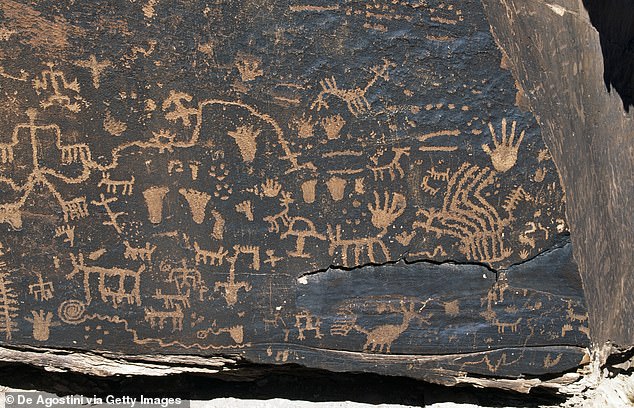
More than 650 petroglyphs, which are images etched directly into the rock surface, can be found at Newspaper Rock
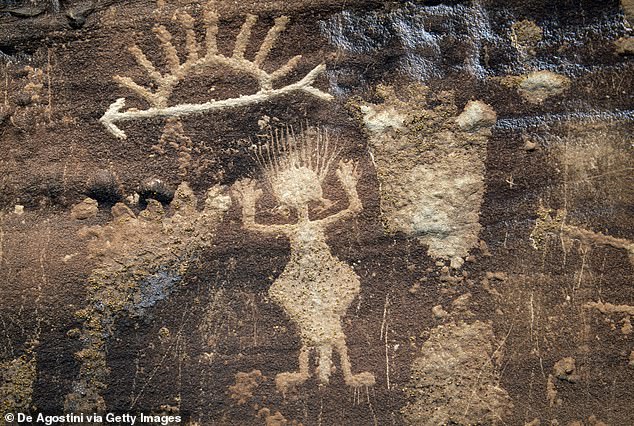
The petroglyphs were created by the Pueblo people who lived along the Puerco River between 650 and 2,000 years ago
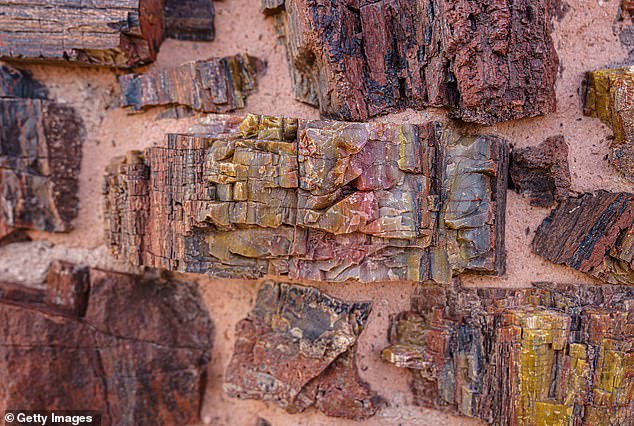
“I’ve seen incredible mountains and lakes all over the country, but I’ve never seen petrified wood,” says travel journalist Monica Humphries
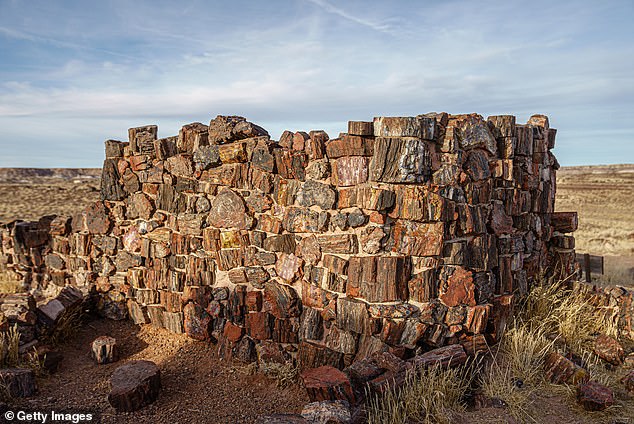
Gemstone collectors used to dynamite the logs to try to find quartz and opal, but this practice was prevented after the petrified forest was named a national monument and later a national park.
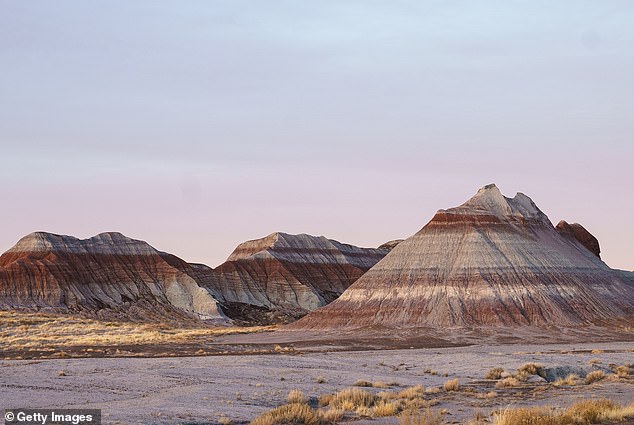
Paleontological digs have uncovered fossils in the park that are more than 200 million years old, the era commonly referred to as ‘The Dawn of the Dinosaurs’
Newspaper Rock is home to more than 650 petroglyphs, which are images etched directly into the rock surface.
According to the park’s website, they were created between 650 and 2,000 years ago by the Pueblo people who lived along the Puerco River.
The tree trunks that created the park’s stunning sights were washed into a river system more than 200 million years ago and buried quickly and deeply by a large amount of sediment and debris, cutting off their oxygen and slowing the rotting process.
